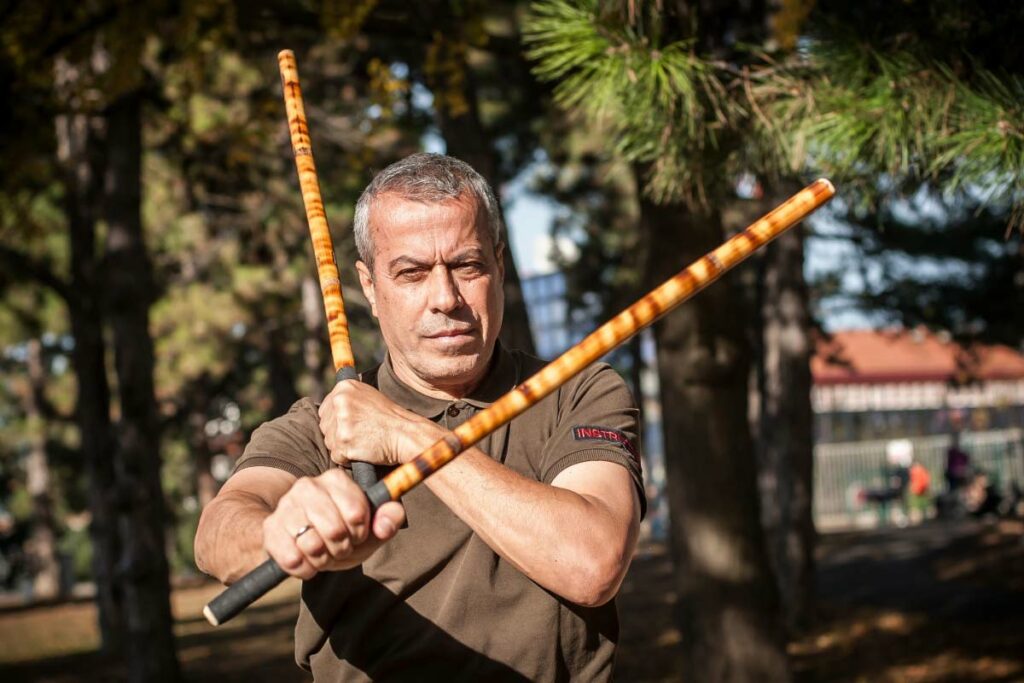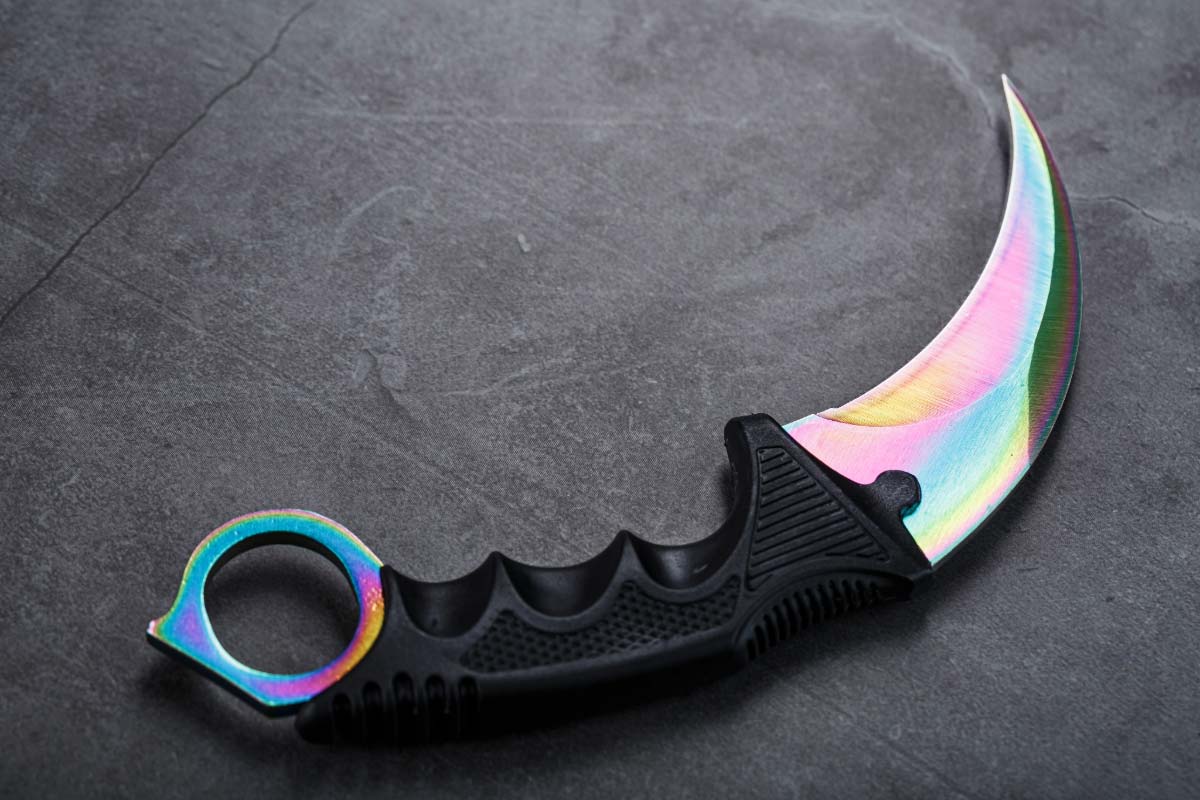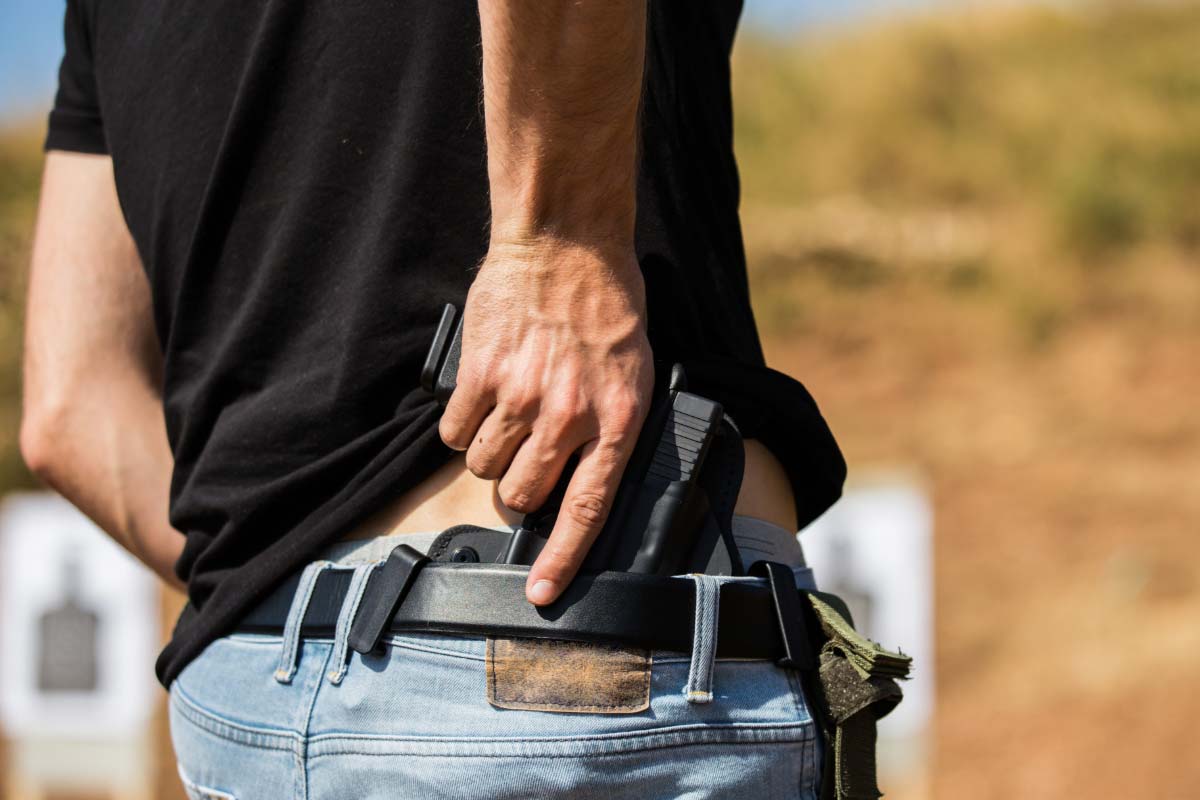Filipino martial arts, known locally as Arnis, Eskrima, or Kali, represent a diverse range of fighting techniques from the Philippines, developed for both combat and self-defense.
Rooted in a rich history that spans centuries, these arts have evolved from tribal warfare and defense against invaders to modern applications in law enforcement and the military.
Beyond their practical use, they embody the Filipino spirit of ingenuity and resilience.
At the core of Filipino martial arts is the use of weapons, particularly sticks, knives, and other bladed instruments, which seamlessly transition into empty-hand techniques.
This adaptability makes the practice not only a physical discipline but also a strategic one, emphasizing fluidity, rhythm, and control.
The techniques are not only designed to disarm and neutralize opponents but also to turn any object into an effective tool for protection.
As we explore further, we’ll get into the fundamental principles of Filipino martial arts, examine its cultural significance, and understand how its practices are relevant in today’s self-defense scenarios.
History and Evolution
Filipino Martial Arts (FMA), encompassing Kali, Eskrima, and Arnis, have a rich history rooted in the Philippines’ diverse culture. Originating from various tribes across the archipelago, these combat techniques were influenced by the tomahawk and knives of the Visayas and the bladed weapons of the Tagalog and Moro warriors. The intermingling of indigenous methods with Spanish weaponry during the colonial period further evolved FMA.
During the Spanish colonization, practitioners disguised their martial training as cultural dances, ensuring the art’s survival and clandestine transmission. These arts served as tools of revolution against oppressive rulers, fostering a spirit of resistance that figures like Jose Rizal exemplified. Post-Spanish era, FMA continued to adapt and flourish.
Cultural Evolution: FMA reflects the varied topography of the Philippines, from the rugged mountains of Luzon to the riverine lands of the Visayas. Each region’s unique characteristics contributed practices that, when unified, encompassed skills perfect for both self-defense and revolutionary combat.
Colonial Influence and Independence: The martial arts became crucial during the American colonial period and in subsequent struggles for independence. They were instrumental in warfare, notably during the Philippine-American War and World War II, leading to further refinement and modernization.
Styles and Variations

Filipino Martial Arts (FMA), a term often synonymous with the practices of Arnis, Eskrima, and Kali, offers a variety of styles deeply rooted in the Philippines’ history and culture. These systems are known for their emphasis on blade weaponry but also include hand-to-hand combat and improvised weapons.
Arnis
Arnis, also referred to as Modern Arnis, distinguishes itself with an emphasis on stick fighting and incorporates elements from Spanish fencing. The Philippine national sport focuses on the fluidity of movement and strikes.
Eskrima
Eskrima features a comprehensive approach to combat, emphasizing weapon-based fighting with sticks, knives, and other bladed weapons. It’s revered for its practical modern blade system and is incorporated into the training programs of various international armed forces.
Kali
Kali is noted for its sophisticated use of weaponry and empty-handed techniques. Known for its flowing and intricate movements, this style leverages weapons as an extension of the body’s natural lines.
Modern Arnis
Introduced by Remy Presas, Modern Arnis is a synthesis of traditional Filipino stick-fighting with influences from Japanese martial arts. It prioritizes control and disarmament of the opponent.
Pekiti-Tirsia Kali
Pekiti-Tirsia Kali specializes in close-quarters combat, stressing on offensive strategies. The system is structured around triangular footwork and timing to navigate through conflicts effectively.
Techniques and Training
Filipino Martial Arts (FMA) encompass a variety of techniques and training methods that are effective for self-defense and combat. The training incorporates weapons, striking, and grappling, focusing on adaptability and flowing movement.
Stick Fighting
The use of sticks, specifically rattan, is central in FMA, often referred to as arnis or eskrima. Practitioners master striking patterns such as sinawali, which are double stick weaving motions. They also train in single stick techniques, using drills like Sumbrada, enhancing their skill in power generation and precision.
Blade Techniques
Blade techniques in FMA involve various bladed weapons, from daggers to bolos. Training includes knife fighting and sword fighting principles, with an emphasis on the fluid transition between offense and defense, a concept known as esgrima. This may include weapons such as karambit knives or the balisong butterfly knife.
Unarmed Combat
Unarmed combat, or mano mano, consists of striking with legs, elbows, and knees, as well as the Filipino boxing art panantukan. This also encompasses kinamutay, the art of using the limbs as if they were blades to apply slicing strikes and manipulations.
Footwork and Body Mechanics
Footwork is the foundation of positioning and evasion in stick fighting and blade techniques. Drills involve hakbang or stepping patterns like hakbang tatsulok, which is triangular stepping to control range and employ effective tactics.
Locks and Grappling
Locks and grappling, or dumog, involve close-range tactics that use force and leverage to control or neutralize an opponent. Training includes joint locks, throws, and takedowns, essential for self-preservation in close quarters.
Weapons and Gear
Filipino martial arts (FMA) emphasize proficiency with a variety of weapons, reflecting the rich history and practical demands of combat. These systems prioritize weapons training, with an array of traditional gear adapted over time for modern use.

Traditional Weapons
Filipino martial arts are known for their diverse arsenal of traditional weapons.
These include the rattan stick, often used in pairs for drills and sparring in styles like Arnis de Mano.
Bladed weapons are equally significant, with the bolo, a machete-like tool, and the kris, a wavy-bladed sword, being a fundamental part of the practitioner’s weaponry.
The barong, a leaf-shaped sword, and kampilan, a long, single-edged sword, are also pivotal, utilized for their lethal effectiveness in combat.
Spears and daggers, commonly referred to as daga, round out the traditional weapons often wielded by FMA practitioners.
Modern Adaptations
The transition into the modern era has seen FMA weapons evolve with practical modifications to meet current needs.
While traditional sticks remain, they are often paired with fencing-style protective gear for safety in contemporary practice.
Knives and machetes are now manufactured with various synthetic materials for training purposes, allowing for a realistic yet safe learning environment.
The essence of traditional FMA weapons is preserved, even as they adapt to modern martial arts landscapes, ensuring their relevance and effectiveness are maintained.
Cultural Significance
Filipino martial arts (FMA), encompassing practices such as Arnis, Eskrima, and Kali, hold deep cultural significance in the Philippines.
As the national sport, Arnis symbolizes the rich heritage of the country. It bears witness to the Filipino spirit of perseverance and skill, both in the arenas of sport and historical combat. This martial art mirrors the interweaving of indigenous practices and the influence of foreign powers over centuries.
Arnis was officially declared the national martial art and sport of the Philippines in 2009. This designation reaffirmed its prominence as a cornerstone of Filipino identity.
These arts are not merely a form of combat; they embody the historical narrative of resistance and survival. They reflect the Filipino peoples’ struggles and triumphs through colonization and their fight for independence.
Today, FMA is integral to cultural exhibitions and educational programs, aiming to preserve and promote Filipino heritage.
Arnis is taught in schools as part of the physical education curriculum, engraining its philosophies and techniques in the young. This instills a sense of national pride and cultural continuity. It ensures that the practice and its inherent values are passed down to future generations.
Internationally, FMA has garnered respect for its effectiveness and holistic approach to self-defense. The global Filipino community plays a crucial role in the diaspora, fueling FMA’s spread and recognition as a dynamic and formidable martial art. It serves as a cultural ambassador, showcasing FMA as an emblem of the Philippines’ historical resilience and cultural richness.
Practical Applications
Filipino martial arts (FMA) offer a wide range of applications that serve practical needs in self-defense, law enforcement, and competitive sports. These arts emphasize efficiency and adaptability in real-world scenarios.
Self-Defense
Filipino martial arts are renowned for their self-defense techniques, which include the use of both weapons and empty-handed tactics.
Techniques such as “tapi-tapi,” “mano-mano,” and “damog” drills allow individuals to defend themselves effectively in various situations.
The training is structured to respond to different levels of aggression with appropriate defensive maneuvers, fostering a sense of confidence in one’s ability to protect oneself.
Law Enforcement and Military
In the context of law enforcement and military, Filipino martial arts are highly valued for their practicality and adaptability.
Soldiers and law enforcement officers benefit from FMA due to its focus on weapon disarming and retention techniques.
The U.S. Army’s Modern Army Combatives program incorporates these arts, recognizing their effectiveness in close-quarters combat.
Similarly, the Russian Spetsnaz has adopted FMA techniques, highlighting their significance in specialized military training.
Sport and Competition
FMA also translates into the arena of sport and competition. The dynamic movements and strategic gameplay make it a fascinating and challenging competitive sport. Participants are able to showcase their skill in wielding sticks, knives, and other weapons, along with demonstrating their hand-to-hand combat abilities. This sport aspect allows martial artists to test their skills in a controlled environment, gaining experience and respect for the art form.
Global Influence and Expansion
Filipino Martial Arts (FMA) have seen an uptick in global recognition, particularly in the United States, through cinema and various international seminars. This growth is marked by its integration into different cultural sectors and the spreading of its techniques worldwide.
FMA in the United States
Filipino Martial Arts have established a robust presence in the United States, primarily due to the influence of notable individuals such as Dan Inosanto, a revered martial artist who studied under Bruce Lee.
Inosanto has been pivotal in introducing FMA to a broader audience, not just within the martial arts community, but also by integrating it into the Jeet Kune Do philosophy.
Furthermore, the U.S. Army’s Combatives Program has adopted FMA for its practical approach to close-quarter combat, illustrating the martial art’s tactical efficacy.
Cinematic Representation
Hollywood has played a significant role in bringing FMA to global attention. Films such as “Taken” have showcased the effectiveness of FMA in intense, realistic action sequences, captivating audiences worldwide. The use of FMA in cinema not only entertains; it also educates the public about the art’s dynamic and diverse techniques.
International Seminars and Workshops
Seminars and workshops have become a conduit for spreading FMA beyond Philippine shores. These events often feature seasoned practitioners who have mastered the intricacies of Kali, Eskrima, and Arnis, the primary systems within FMA. By hosting workshops in various countries, FMA has garnered an international community of enthusiastic learners and practitioners, fostering cultural exchange and expanding the art’s reach.
Educational and Organizational Structures
Filipino martial arts (FMA) boast a robust framework for education and organization. Respected training schools and officially recognized associations ensure the consistent development of FMA while promoting unity and discipline within the community.
Training Schools and Academies
Training schools and academies serve as the foundational pillars for educating students in Filipino martial arts. They typically offer a structured curriculum that encompasses both theoretical knowledge and practical skills. These institutions often vary in their approach, with some focusing on traditional aspects, while others integrate modern techniques to augment their teachings.
A prominent method across many FMA training centers is a hands-on, skill-based education that emphasizes respect, precision, and the mastery of various weapons and techniques. This format vitally contributes to the discipline’s perpetuation and the personal growth of each practitioner.
Governing Bodies and Associations
There is no single official governing body for Filipino martial arts (FMA) recognized internationally. The practice of FMA is diverse and includes many styles and systems, each often overseen by different organizations, schools, or masters.
In the Philippines, there are several organizations that promote FMA, and some have been more prominent in certain regions or for certain styles.
For instance, the Philippine Eskrima Kali Arnis Federation (PEKAF) is recognized by the Philippine Sports Commission as the official governing body for Arnis/Eskrima/Kali as a sport in the Philippines. PEKAF is responsible for overseeing, promoting, and standardizing competition rules for Arnis as a sport in the country.
However, outside of the Philippines and in the broader context of FMA practice around the world, there is no centralized authority.
Various international organizations, associations, and federations exist, each with its own set of rules, regulations, and philosophies pertaining to the practice and promotion of FMA.
These groups often work independently to support the growth and recognition of FMA in their respective countries and communities.
Prominent Practitioners and Grandmasters
Filipino martial arts (FMA) boasts a rich tradition with various grandmasters shaping its history. Dan Inosanto stands out in this lineage; he is a well-respected practitioner and has been pivotal in popularizing FMA worldwide. Trained under legendary figures like Bruce Lee, Inosanto has elevated the global profile of FMA through his teachings and seminars.
Grandmasters of FMA often hold authoritative positions within the martial arts community, often having learned and adapted techniques from their predecessors. Their impact is substantial, as they preserve the cultural context and techniques of FMA and contribute to its evolution. The heritage of FMA is a product of their commitment to the discipline, and their legacies continue through their students.
Prominent Figures in Filipino Martial Arts:
| Grandmaster | Contribution |
|---|---|
| Remy Presas | Modernized Arnis, making it accessible to practitioners globally |
| Leo Gaje | Pekiti-Tirsia Kali system advocate |
| Angel Cabales | Introduced Eskrima to the United States |
| Antonio “Tatang” Ilustrisimo | Known for Kalis Ilustrisimo, a distinct FMA system |
These individuals have been foundational to FMA’s growth, and their teachings have cascaded through generations. They have laid down a framework of skills and principles from which countless students have benefited. Their dedication ensures FMA remains a relevant and practiced martial art today.







